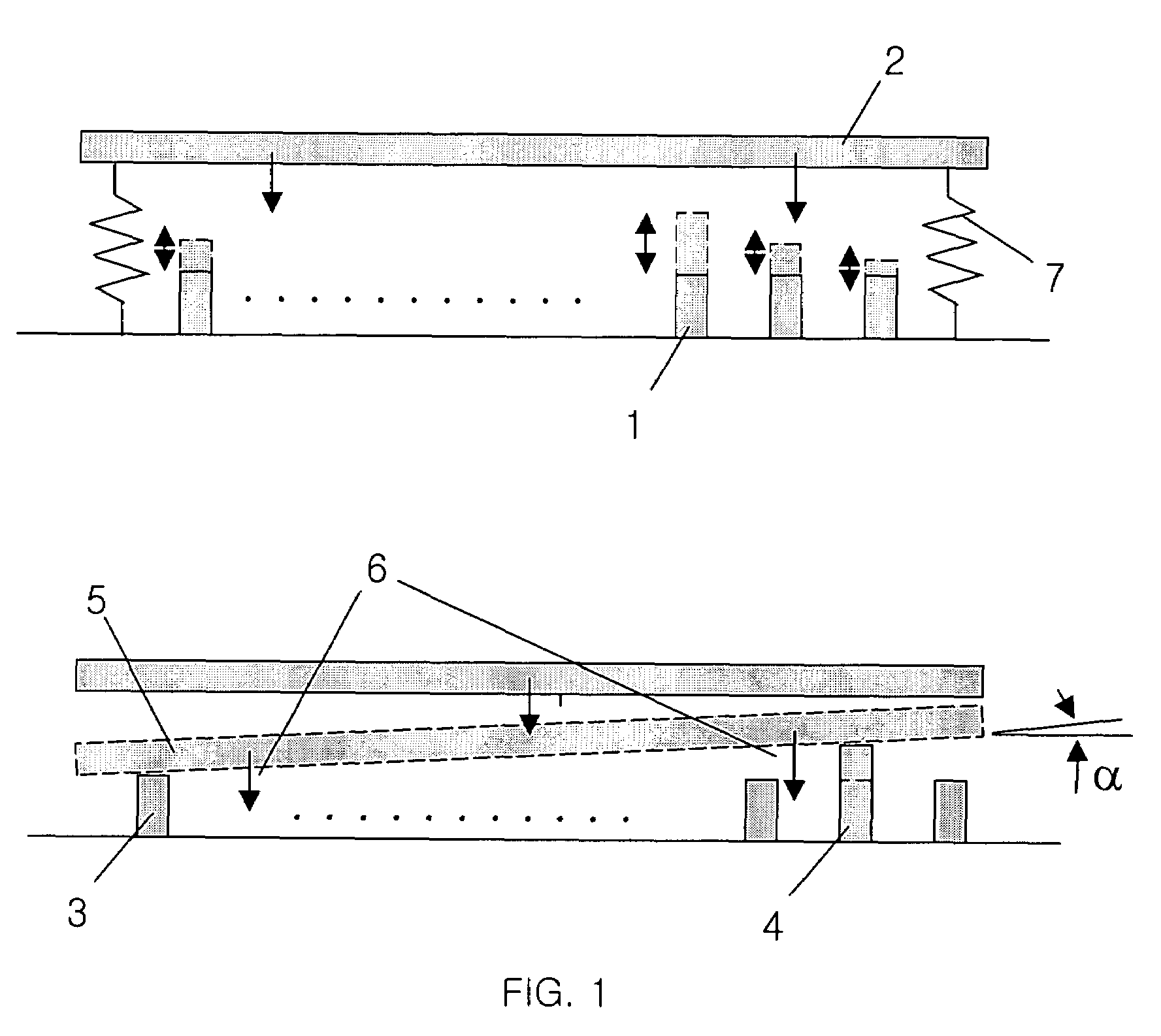Variable focal length lens and lens array comprising discretely controlled micromirrors
a discrete control, variable-length technology, applied in the direction of mirrors, mountings, instruments, etc., can solve the problems of reducing the useful range of translation and rotation, high driving voltage is also a disadvantage of the conventional electrostatic micromirror in practical use, and inaccuracy of mirror displacement is another important disadvantage of the conventional electrostatic micromirror, etc., to achieve large numerical aperture variation, large focal length variation, and low driving voltage
- Summary
- Abstract
- Description
- Claims
- Application Information
AI Technical Summary
Benefits of technology
Problems solved by technology
Method used
Image
Examples
Embodiment Construction
[0034]FIG. 1 shows the concept of the DCM with the variable supports 1. The variably supported discretely controlled micromirror (VSDCM) uses supports 1 providing gaps of various width through which the micromirror can move. The supports 1 are located under the micromirror 2. Translation and rotation of the VSDCM are determined by combinations of gaps, which are determined by variable supports 3, 4 on which the micromirror 5 rests. Gaps determined by the variable supports are controlled and the micromirror rests on the controlled supports 3, 4 by attractive force 6. Therefore, the combination of gaps which the supports 3, 4 provide determines translation and rotation of the micromirror 2. Gap variation by the supports 3, 4 is determined by bistable motions of the supports 3, 4 and the motions are controlled by digital voltage. The position of micromirror 5 is restored to its initial position by the force of flexible spring 7 when the attractive force is off.
[0035]FIG. 2 shows anothe...
PUM
 Login to View More
Login to View More Abstract
Description
Claims
Application Information
 Login to View More
Login to View More - R&D
- Intellectual Property
- Life Sciences
- Materials
- Tech Scout
- Unparalleled Data Quality
- Higher Quality Content
- 60% Fewer Hallucinations
Browse by: Latest US Patents, China's latest patents, Technical Efficacy Thesaurus, Application Domain, Technology Topic, Popular Technical Reports.
© 2025 PatSnap. All rights reserved.Legal|Privacy policy|Modern Slavery Act Transparency Statement|Sitemap|About US| Contact US: help@patsnap.com



